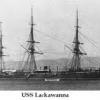-
Posts
6,288 -
Joined
-
Last visited
Content Type
Profiles
Forums
Gallery
Events
Everything posted by Canute
-
Maybe the multi-part hull was to make it fit into a somewhat smaller box. The 1/350 scale Essex class ships had separate bow pieces, so getting the hull straight was a concern for the builder.
-

Inexpensive powered rope walker
Canute replied to hornet's topic in Modeling tools and Workshop Equipment
Well done, mate. -
DR, I'd give you a New York minute to get moving. May not use the Chrome Horn, but I'll be flying close formation. Enjoy the trip. Jesse, sorry about hijacking your thread.
- 1,306 replies
-
- syren
- model shipways
-
(and 1 more)
Tagged with:
-
DR, you will lose your mind walking into Freetime. Aftermarket for many kits. Kits from places I didn't know made kits. It's a good thing it's about 3 hours from me or I'd go broke there. :D
-
Greg, what color will the treadplate get painted? I have a 1/700 Mogami in the stash and the painting instructions are less than stellar. Lucky they reference Tamiya colors. No Model Master or Vallejo cites in their instructions.
-
Good technique, Jesse. Glad to hear you're OK after the Hurricane. I was up in the Hampton/Norfolk area last week and the local news shows were reporting on the flooding and devastation in eastern NC. The Tar Heel State took a massive hit.
- 1,306 replies
-
- syren
- model shipways
-
(and 1 more)
Tagged with:
-
You might check out Loose Cannon. They do/did an HMS Furious from 1917/1918. Two separate decks with "taxiways" from the aft platform to the forward one. Power projection in it's infancy.
-

Red Paint or Red Ochre
Canute replied to davyboy's topic in Painting, finishing and weathering products and techniques
Take a look at the Model Master line from Testors. They have enamels and acrylics and should have a number of these shades. And don't forget Vallejo and Tamiya. They are acrylics in these shades, although some of the Tamiya may be voc based. -
Nicely done, Grant. Smooth finish and the stain looks great. I did a cherry blank with a scraper and really liked how smooth it made the wood.
- 339 replies
-
- dumas
- Chris-Craft
-
(and 3 more)
Tagged with:
-
Nice blending of colo(u)rs on your decking. Making plastic look like real wood is an art.
-
Greg, all I can say is WOW. She's a beauty.
- 342 replies
-
- dreadnought
- zvezda
-
(and 2 more)
Tagged with:
-
Danny, good luck in your chemo treatments. Keep the good attitude. The docs are getting better with beating the "C".
- 268 replies
-
Think I'll slide in here and follow along, too. My father-in-law served on the Shangri La after WW II and into Korea. I have a Hancock that I can use as a base for the Shangri La, but I think it'll be OOB, with appropriate PE and wood detailing.
-
I got a cast off. My Admiral can be a gadget gal and buy a new widget from time to time. Some time back I said I wanted to try the heat technique for bending. Next thing I know, I get a hair dryer to practice with. I love her. Yeah, I was pre-bending that last plank between my thumbs and fingers and I felt a little twinge. I laid it down so that I can do it up properly, instead of pushing it. "use the heat, Obiwan" .
-
I use them all the time and modify as needed. Turn a few around so that the thin parts are used as the clamping part. Like some wise man said, you can never have too many clamps.
- 244 replies
-
- borodino
- dom bumagi
-
(and 1 more)
Tagged with:
About us
Modelshipworld - Advancing Ship Modeling through Research
SSL Secured
Your security is important for us so this Website is SSL-Secured
NRG Mailing Address
Nautical Research Guild
237 South Lincoln Street
Westmont IL, 60559-1917
Model Ship World ® and the MSW logo are Registered Trademarks, and belong to the Nautical Research Guild (United States Patent and Trademark Office: No. 6,929,264 & No. 6,929,274, registered Dec. 20, 2022)
Helpful Links
About the NRG
If you enjoy building ship models that are historically accurate as well as beautiful, then The Nautical Research Guild (NRG) is just right for you.
The Guild is a non-profit educational organization whose mission is to “Advance Ship Modeling Through Research”. We provide support to our members in their efforts to raise the quality of their model ships.
The Nautical Research Guild has published our world-renowned quarterly magazine, The Nautical Research Journal, since 1955. The pages of the Journal are full of articles by accomplished ship modelers who show you how they create those exquisite details on their models, and by maritime historians who show you the correct details to build. The Journal is available in both print and digital editions. Go to the NRG web site (www.thenrg.org) to download a complimentary digital copy of the Journal. The NRG also publishes plan sets, books and compilations of back issues of the Journal and the former Ships in Scale and Model Ship Builder magazines.


